Cervical osteochondrosis – disease of the spine, in which there is a degenerative changes in the intervertebral discs. In the first stage, symptoms are almost imperceptible, but with the spread of the pathological process, the patient's condition deteriorates.

Causes of the disease
Osteochondrosis arises as a result of an uneven load on the spine. Triggering Factors:
- heavy physical load;
- wearing the wrong shoes;
- Under-nutrition;
- Problems with metabolic processes;
- nervous and emotional exhaustion.
The disease can occur during the incubation of the child. A large risk in multiple pregnancies. The pathological process may be determined genetically.
Stage of development and photo
The development of osteochondrosis is slow. There are 4 main stages of disease:
- In the first Phase. The Patient feels discomfort during prolonged go and stay in the same Position. To catch, the seals in the intervertebral discs.
- In the second stage. Pain Sensations Occur. The doctor prescribes manual therapy and pain relievers.
- In The Third Stage. There are marked degenerative changes in the intervertebral discs.
- The fourth stage. The last Phase of the development of the disease, the amazed almost all areas of the spine.
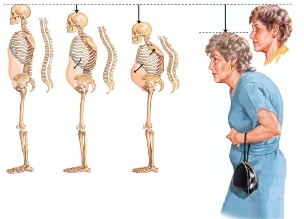
In the last Phase of the conservative therapy is ineffective. The doctor prescribes a surgical procedure requiring a long recovery.
General Symptoms
Osteochondrosis can affect one or more divisions of the spine Most often, the vertebrae of the spine is affected. Clinical symptoms such deviations directly related to the work of the brain. We will consider all the essential symptoms of this disease.
Pain in the head, neck and throat area
In patients pain in the neck is often caused, back of the head and neck area. It's supply is produced as a result of insufficient blood in the divisions of the brain. The deformation of the vertebral body leading to compression of the vertebral artery. Against the background of this degenerative process, a hernia can occur.
Together with painful sensations arises the risk of serious complications. For example, disturbances in blood pressure or persistent violations of the right to a hearing and of vision. Occasionally, patients may experience panic attacks, and anxiety disorders. They take 30 minutes. It's a condition called diencephalic syndrome.
Another reason for pain – muscle spasms, which leads to a decrease in blood flow. The Patient may temporarily lose the ability to wiggle your neck. Strong surge leads to the pain starting from the neck, flowing in the back of the neck and can spread further on the head As a result of such processes, the Patient suffers from strong migraines.
Noise, ringing, feeling of fullness in the ears
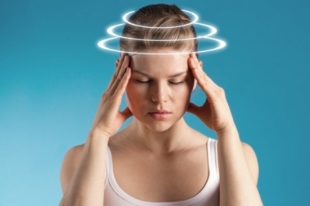
Such a series of symptoms called or cochlear Cochlear. Doctors don't always have such deviations can diseases bind with the development of cervical degenerative disc.
The noise and the Tinnitus occurs when the change in the Position or stay longer occur in the same Position.
Dizziness
The vertebrae of the cervical spine are quite thin, so if you are exposed to the head, you heavy duty. You are more prone to deformation than the thoracic vertebrae. As a result of deviations in the occurrence of dizziness, which can be:
- System. To present a feeling of the circular movement of the body and the surrounding objects. It occurs because of a problem in the working of the vestibular apparatus, muscles and receptors in the joints.
- No systemic. The Patient is upright, the feeling of helplessness, numbness and uncertain condition. The sense of circular Rotation is missing.
If such symptoms occur, you must immediately consult a doctor. The reason for the emergency hospitalization of the patient:
- Numbness of the shoulder;
- Paralysis of the facial muscles;
- Loss of consciousness;
- severe headache.
Displaced vertebrae, and spasm leads to a pinching of the nerves that nourish the brain. Due to the lack of oxygen, the occurrence of dizziness. Originally, oxygen deficiency occurs in the back of the head, as it is the center of the vestibular apparatus.
Swiss chard on air
Lack of air in the case of osteochondrosis may be of different types: problems with breathing and lack of oxygen. The breathing is embarrassed in front of the background of a jamming of a nerve, the signals from the pharynx to the esophagus.
Chard of air occurs because of a pinched nerve. As a result, the spasm of the diaphragm, which is associated with the change in the depth and rhythm of breathing arises. The Patient is stuffy and hard to breathe.

This is a serious Symptom, such as dyspnea in the case of osteochondrosis dangerous the development of a number of other complications. In this case, the doctor prescribes a drug treatment.
Nausea
Neck – the most sensitive, since in its structure there are a large number of nerve fibers and blood vessels. By the neck artery passes through the oxygen and nutrients to the brain. When cervical osteochondrosis formed a protrusion, and bulbosus hernia.
To the rear of the structures of the brain, an insufficient quantity of arterial blood. This starts the Mechanisms of compensatory reactions. Narrowing of the arteries leads to an increase in blood pressure. The Patient has the feeling of nausea.
If not to restore the blood flow to the posterior structures of the brain in a patient occurs, vomiting and loss of consciousness. Long violation of cerebral circulation involves the development of stroke and other disabilities.
Eye problems
In the case of the osteochondrosis of the neck of the patient may experience double vision, biting midges, and flicker. Lay testimony about the onset of serious diseases, which appear on the background of osteochondrosis. These include the following diseases:
- Glaucoma;
- Cataract;
- Disease Claude Bernard-Horner.
Important a change in the condition of the eyes is. This is an important Symptom that shows the problems with the health.
Horse Racing Blood Pressure
At first it may seem that the race of the blood pressure and osteochondrosis have nothing to do. However, it is not so. In the case of degenerative changes in the spine, the autonomic nervous system of the people's suffering.
Horse racing in the course of the day observed. For such disease, persistent hypertension is not typical.
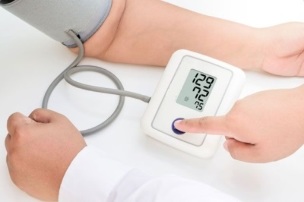
Hopping daily dynamics uretralnoe hypertension occurs when the reflector by irritation of the nerve, and transient spasms krovenosnyh vessels.
Symptoms of high blood pressure with cervical osteochondrosis:
- severe headache;
- Pressure peaks after Stress or muscular over-exertion;
- Pain sensations in the extremities: arms, legs, etc.;
- low sensitivity in the neck area.
Sudden fainting, or sincopale state
Sudden fainting can be avoided occur as a result of short-term cessation of blood flow in the vertebral arteries. If the Patient is unconscious, he must place it so that the legs over the head. This activates the blood flow to the brain. After the syncope, there may be problems with the language and movements.
Pharyngeal Cancer Problems
Sometimes, on the occurrence of degenerative processes in the cervical spine statements only pharyngeal cancer symptoms can. By manifest:
- Difficulty swallowing;
- Neck pain;
- Feeling of a foreign body in the throat;
- Itching.
Such signs associated with damage to the nerve-vascular trunks, which with the spinal cord. However, these symptoms occur not only in osteoporosis, but also in inflammation and tumors.
Increase in body temperature
When cervical osteochondrosis the body temperature rises. This Symptom occurs if the following losses:
- Syndrome of the vertebral artery;
- Bulging Disc;
- Stenosis of the vertebral canal.
Increased body temperature, neurosis, neurological zabolevaniem and fibromyalgics syndrome to be triggered. Sometimes there are some pathological conditions, burden diseases, the symptoms of the degenerative disc.
Symptoms depending on the stage of the disease

- In the first stage of the disease, the symptoms may not be observed. The first signs of the onset of the degenerative processes: a headache, a slight restriction of the motor activity of the neck, headache, discomfort in the neck and the hands. These characters travel or head tilt can be expressed in a curve.
- In the second Phase of the development of the projection of the vertebral Discs, the brain begins-cracks begin to shrink. The pain is more pronounced, appears Tinnitus and sleep disorders.
- The third stage differs from the destruction of the Anulus fibrosus of the disc. The distortion and displacement of the vertebrae, a herniated disc caused the lapse incident in the cervical spine.
- On the fourth stage, the most are degenerative changes irreversible.
Which arise in the brain?
Symptoms in the brain may be pronounced or minimal. Cerebral deviations occur only in case of strong clamped leading vertebral artery bony appendages. This causes problems with the access of the blood caused in the brain and this in turn causes spasms of the small vessels and injury to the Hypothalamus.
When cervical osteochondrosis can occur in the following syndromes:
- Hypothalamus. He may be neurological and physical.
- Syncope and Drop-syndrome. They appear in the fact that the Patient feels weak and loses consciousness for a few minutes.
- Vestibular Stem. Observed dizziness when turning the head.
As a result of these degenerative processes, the Patient tries to avoid public places. For him, unfounded fears, and depression arise.
Differences in women and men
It is hard to distinguish the symptoms of cervical chondrosis in men and women. Degenerative changes in the cervical spine, more common in women, this spine due to the anatomical structure of the neck. In men, cervical musculature is better developed.
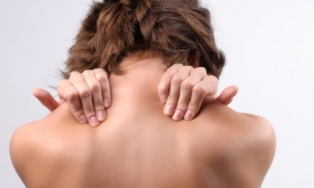
Chondrosis of the vertebral column in children and adolescents
Chondrosis of the vertebral column in children and adolescents is a result of the General delay in development of the connective tissue. This can be as a result of genetic abnormalities or disorders of mineral metabolism. Immature intervertebral discs are prone to different pathological processes.
The disease occurs due to lack of exercise, long sitting at the Computer, and the presence of obesity. Symptoms of such a disease similar to the symptoms of osteochondrosis in adults. With the defeat of the cervical spine of the patient's pain in the neck, seizures, dizziness and migraines arise.
Diagnosis
Before the diagnosis and prescription of the treatment, the doctor is a series of diagnostic Tests results. A or external audit is carried out, the estimated attitude, and investigated the condition of the muscles.
Computed tomography
The computed tomography offers the possibility of the bone cells in 3D-projection. According to the principle of the implementation of such a procedure is similar to the x-ray. However, such a diagnosis you can see, layering the image.
Such a procedure is not performed in children and pregnant women, as it is a high dose x-ray radiation. To stay the contraindications include lack of ability of the patient in a fixed Position within a couple of minutes.
X-ray
X-ray – a classical method assigned to the disease for the diagnosis of degenerative disc. It is nearly harmless, and the extent of degenerative changes. With the help of this technique, you can determine in the early stages of the disease.
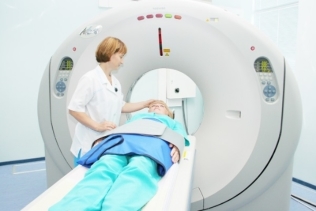
X-ray do not get the possibility of stratification of the image of diseased tissue. There are a number of modern and informative methods of investigation. X-ray is only suitable for the primary diagnosis.
Osteochondrosis – a dangerous disease without timely treatment may lead to irreversible degenerative changes and disability. In the initial phase, slight discomfort may be present. With the development of the pathological process, symptoms will be more intense. At the first sign of damage to the spine, you should immediately consult a doctor.

































